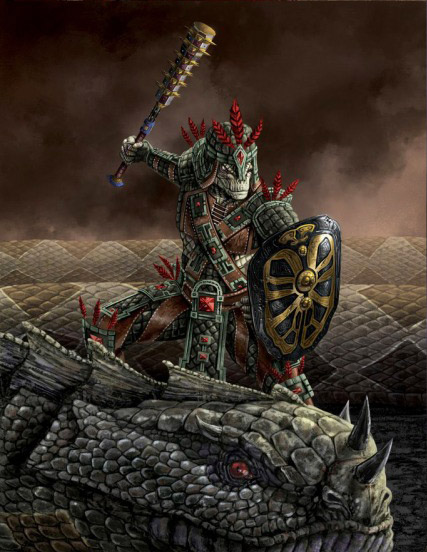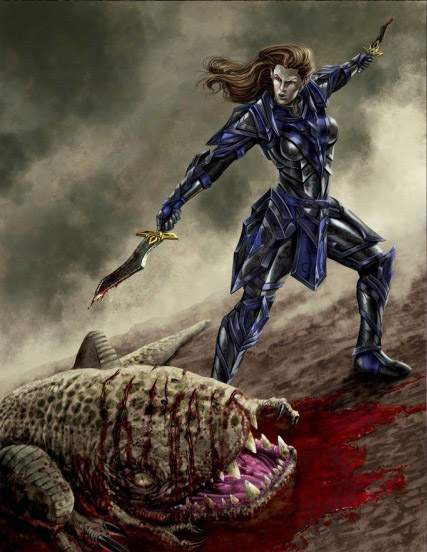Gathering Force/Chapter 3 : Différence entre versions
m |
|||
| (Une révision intermédiaire par un autre utilisateur non affichée) | |||
| Ligne 60 : | Ligne 60 : | ||
''From the fiendish toothpick to the elaborately rune-encrusted great sword, Nord weaponry has a rugged but exceptional quality, thanks to the heat of their forges and the competence of their red-faced blacksmiths.'' | ''From the fiendish toothpick to the elaborately rune-encrusted great sword, Nord weaponry has a rugged but exceptional quality, thanks to the heat of their forges and the competence of their red-faced blacksmiths.'' | ||
| + | |||
| + | [[fr:Regroupement de Force/Chapitre 3]] | ||
{{LivreSerieBarre | {{LivreSerieBarre | ||
| titre = Gathering Force | | titre = Gathering Force | ||
Version actuelle datée du 18 septembre 2017 à 17:25
Real author : David S. J. Hodgson (Writter), Caio Cacau (Artist) Original media : The Hero's Guides to The Elder Scrolls Online
By Longinus Attius, 2E 581
U NTIL THE CATACLYSM forced our races to bond, Argonians who journeyed far from home seemed happy to wear whatever protection they could trade from other races, perhaps as a sign of their subservient history. But venture into the unpleasant and dripping heat of Black Marsh or observe a more recent encounter with the lizard folk that scuttle along our southeastern border, and you will see their distinctive garb of war. This is a wonderfully primordial collection of roughly sewn elements, brightly colored from the mud and sap of their realm, tattered but tough armaments adorned with a variety of vicious prongs and sharp, fanged serrations, all captured in segments of concentric patterns that imitate the carvings that adorn their strange, stepped pyramids.
The Argonian shellbacks, a formidable fighting contingent now beginning to find their footing in this great war, favor heavier protection. Such armor features splashes of vivid color, apparently the squeezed and ground insides of beetles native to the habitats of the lizard folk. An appreciation for the slaughter of indigenous animals is evident here: giant rodent skins are battered into tough leather, with coral adornments and turtle splints to complete the basic look of a warrior. More ferocious creatures have their skins torn off for weightier armor; the Argonian favors the crocodile, wamasu, or giant snake. Cowrie shells, mudcrabs, and perhaps most alarmingly, evidence of the bones of men tie the assemblage together. An Argonian fighter seems to have stepped out from the great, carved temples of the bog, and the weapons they wave share a similar construction. A wonderful, primitive motif marks many an Argonian's weapon: strange reptilian faces carved into the hilts and pommels and painted with the same degree of garishness. Shields are oval stitched skins and turtle shells. When not seeking protection from their helms, headdresses of leather, jadegrass, and feathers are a common sight, especially adorning priests or whose dabbling in swamp magic. Argonian arms have a thick, unsubtle, primitive ponderosity, wearing well in the humidity and filth of the marsh but surprisingly balanced in practice.
F OR AS LONG as anyone can remember, the Dunmer have made their lot in Morrowind, with its lush fungal valleys and serene grasslands, as well as the choking climes and ash deserts closer to Red Mountain. A Dunmer's armor matches his mood: brooding, sharp edged, and dark. Sharing the same traits as other mer, their armor designs have a certain fluidity and grace in their sweeping curves but lack the overbearing pride of the Altmer. Dour colors of cloth, volcanic glass, and animal hides combine to provide a Dark Elf's tapestry of protection.
Though the Dark Elves may have a dalliance with ebony metals and strange Daedric symbolism, their motives appear to be contrary to the machinations of Molag Bal. Lighter armor is traditionally made from glass, a concoction of rare metals and volcanic resins. Conversely, some tribes employ a strengthening layer of giant insects, such as the assassin beetle, which is more comfortable across the back or loins. Netch leather is apparent in most straps,though the lowly Ashlander is more apt to covet such hides, compared to the high ordinator, who fashions his protection from dreugh hides, hardened with revolting waxy excretions (from the dreugh, not the Dunmer). When the forge fires of Mournhold roar at their zenith, arms of the highest quality are crafted, always with a dark reflection of Morrowind, from the bent and chitin (and bludgeons carved from the limbs of harvested creatures), to the magical, glass-like ebony of Vvardenfell. Diagonal engravings bisect the flat surfaces of every axe, mace, and sword of the Dunmer. Such angularity extends to other apparatus too; there is a jagged edge to many surfaces, particularly prevalent in the designs of daggers, swords, and shields. Heraldry usually takes the form of a stylized insect glyph, seen, on almost every Dark Elf's quiver, but house symbols are also a common form of heraldry, signifying alliances within this realm that tend not to concern outsiders. Fused metal, the carapace pieces of giant insects, guar leather, gems, glass, and obsidian: all are woven into the angular armaments of the Dunmer.
T HOUGH A NORD may share his complexion and traits with a Breton, he tends to shun a refined and delicate battle attire; instead he favors a more stark and furrowed appearance—not quite the look of a man dragged through a bramble hedge, but almost as unkempt. The Nord warrior is proud of his fierce independence, hardy in the thankless severity of his lands, and comfortable with appalling violence as a daily occurrence. His armor and weaponry reflects this boisterous fury, but may also be revered as part of a family's trappings. For the Nord is a warrior race, and all from the goat farmer to the Skald King own an armament of some kind.
Under the braids and beard, but resting on the woad tattoo, lies a Nord's armor. Usually lined with fur (to help contain heat and prevent nasty chafing), and with leather trim work with steel plates attached to the top, the results are weighty and foreboding. Clash with a Nord in his heaviest armor, and your fears of intimidation are realized. Since the time of King Harald, horkers, mammoths, wolves, and great cats have been sacrificed to provide undergarment protection, with thousands of forges throughout the six holds of Skyrim crafting fine plate for a race perpetually at war. Weapons are thick and practical, with strong oak hafts favored for the hand axe, mace, or staff, sometimes wrapped in a leather grip. Usually, swords are formed from steel, with stocks cross guards, sometimes adorned with runes or the fabled knot work also found carved into windswept longhouses across this realm. Strange, glaring semblances of bears, eagles, or elk may stare out from a Nord's shield, but others robust rivulets hammered into wood, with concentric or reflective patterns, like the cross of Ysgramor. A Nord's weapon is seemingly an extension of his arm, and he usually only stops wearing it during his (frequent) bouts of revelry, where it is replaced by a jug of four-eye grog or rum posset. From the fiendish toothpick to the elaborately rune-encrusted great sword, Nord weaponry has a rugged but exceptional quality, thanks to the heat of their forges and the competence of their red-faced blacksmiths.
|












